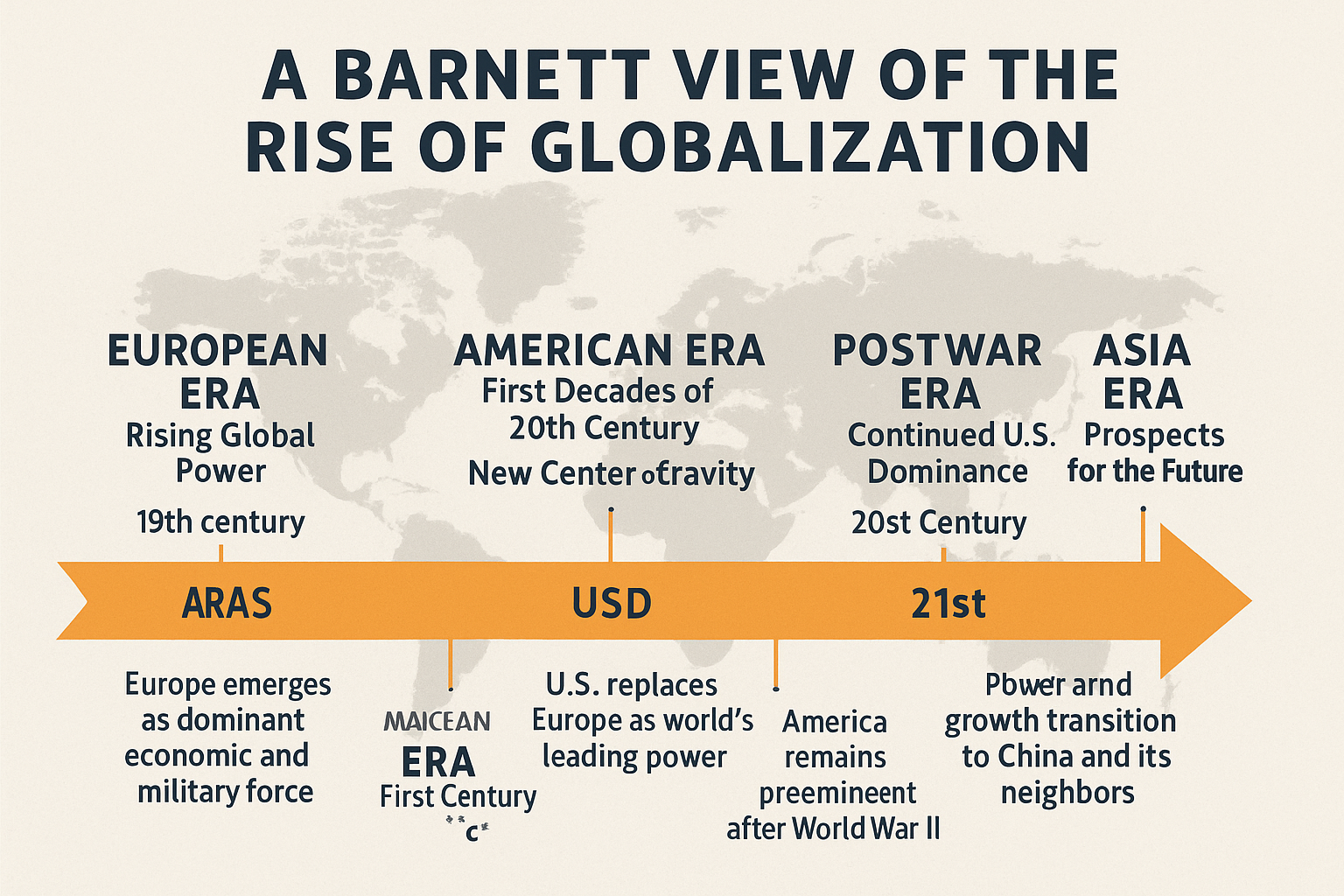The Myth of U.S. Energy Dependency
For decades, it was a popular myth that America was hopelessly dependent on Middle Eastern oil, particularly from Saudi Arabia. Barnett shatters this misperception: America’s largest source of energy is America itself. With the fracking revolution and advances in shale gas extraction, the U.S. became the world’s largest energy producer by 2018.
- Primary Source: Domestic production (fracking, shale oil)
- Secondary Source: North America (Canada and Mexico)
- Tertiary Source: South America
- Quaternary Source: Africa
- Persian Gulf: Only after all these
Modern Update (2024):
Today, the United States is not only energy independent but often a net exporter of oil and gas. Meanwhile, China has surpassed the U.S. as the largest customer of Persian Gulf oil, shifting the global energy axis eastward.
Implication:
Energy independence is a huge geopolitical advantage for the U.S., yet ironically, America’s global power is no longer as energy-dependent as China’s is.
The Shift to Asia: New Epicenter of Globalization
Barnett explains that globalization’s center of gravity has shifted — not to Europe or the U.S. — but to Asia.
- Asia, especially China, now consumes the majority of the world’s raw materials, energy, and infrastructure investments.
- China’s Belt and Road Initiative (BRI) is a modern expression of this: massive infrastructure projects spanning Africa, Asia, and Europe.
Urbanization:
The urban population is exploding:
- 3.3 billion people in cities today (2020)
- Projected 6.5 billion by 2050
- 75 million people added to cities every year
- Half of city dwellers today already live in slums
Implication:
The future infrastructure boom ($40 trillion between now and 2050) will overwhelmingly favor Asia and Africa, not the Western world.
Africa: Ground Zero for Globalization’s Expansion
Barnett highlights Africa as the most critical zone for globalization’s replication — but with messiness and conflict.
- Africa’s colonial-drawn borders (straight lines) don’t match ethnic, tribal, or religious realities.
- Muslim North vs. Christian South: A natural cultural and religious split that creates tension zones across Africa.
Modern Update (2024):
- Conflict zones like Sudan, Mali, Nigeria, and Somalia continue to fracture along these fault lines.
- New countries and breakaway regions (like South Sudan) keep emerging.
Implication:
Africa’s future depends not on clean political borders but on economic integration — connecting landlocked regions to coastal trade hubs and building a middle class before democracy can truly flourish.
How Globalization Works: Replication Through Chaos
Barnett’s insight is that globalization is a messy, iterative replication:
- Europe built it.
- America expanded it.
- Asia (China, India, ASEAN) are now replicating it in Africa and elsewhere.
However, conflict accompanies globalization:
- The American Civil War, WWII, Vietnam, Iraq — integration efforts always generate instability first.
- Modern conflicts in Africa and the Middle East mirror these historical patterns.
The goal isn’t to avoid conflict altogether but to manage it better through alliances, economic unions, and diplomacy.
The Strategic Vacuum: Who Integrates the “Gap”?
Barnett famously divides the world into:
- The “Functioning Core” (stable, integrated economies)
- The “Non-Integrated Gap” (unstable, disconnected regions)
Today, Asia, not America, is tasked with expanding globalization into the Gap.
- The U.S. is distracted and expensive.
- Europe is aging and inward-looking.
- China is stepping into Africa with roads, railways, ports, and investments (Belt and Road).
Reality in 2024:
China now owns major ports across Africa, has dominant stakes in infrastructure, and is Africa’s top trading partner. Meanwhile, American influence wanes outside military assistance.
Present Day (2024) Challenges and Continuations
Barnett’s forecast largely played out — with some key amplifications:
| Barnett’s Prediction | 2024 Reality |
|---|---|
| U.S. becomes energy independent | Achieved by 2018 |
| Asia becomes globalization center | China dominates Belt and Road |
| Africa is the frontier for globalization | True, but conflict remains rampant |
| Slums and urbanization explode | True: megacities in Lagos, Nairobi, Dhaka |
| More conflicts over identity and resources | True: coups in Mali, Sudan, Burkina Faso |
However, new dimensions emerged:
- Artificial Intelligence and data became new critical infrastructure (not just oil and roads).
- Economic warfare (sanctions, trade restrictions) replaced many traditional military interventions.
- Climate change accelerates migration and instability (especially in Africa).
Solutions and Moving Forward
Barnett’s solution was pragmatic: Encourage stability through economic integration, not impose democracy overnight.
Today’s equivalent strategies:
- Build economic corridors, not just nation-states.
- Strengthen regional partnerships (African Union, ASEAN, ECOWAS).
- Encourage local ownership of globalization (less Western neocolonialism).
Potential Risks:
- Rising authoritarianism, especially from China’s style of “stability over freedom.”
- Globalization fatigue in Western democracies.
- A bifurcated world: Chinese sphere vs. American sphere (echoes of the Cold War, but economically intertwined).
Conclusion: Barnett’s Vision Is Still Playing Out
Barnett showed us that globalization is messy, unstable, and nonlinear — but it is also unstoppable.
The real power is no longer in traditional militaries — it’s in who can connect the disconnected.
As Asia rises, Africa fractures and rebuilds, and the U.S. rethinks its role, Barnett’s insight remains a profound warning:
Global leadership isn’t about domination anymore — it’s about management, resilience, and economic connection.
The next 25 years will determine who integrates — and who falls behind.






